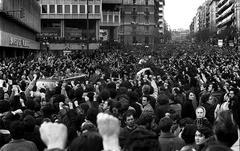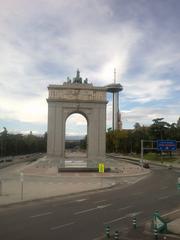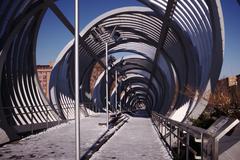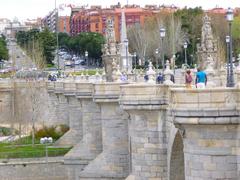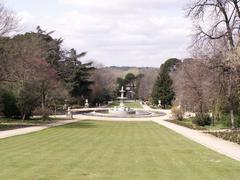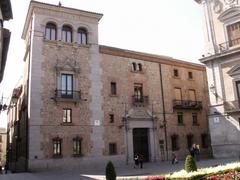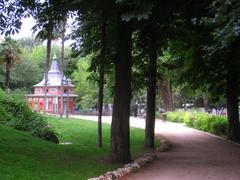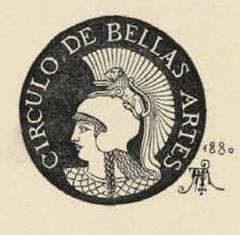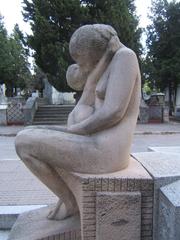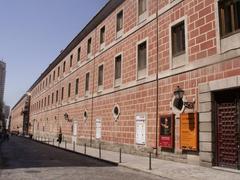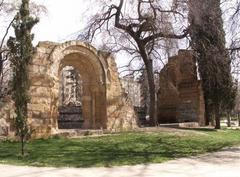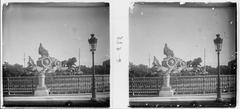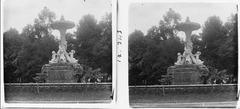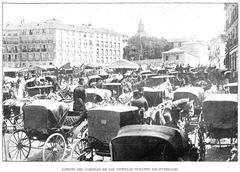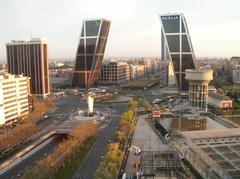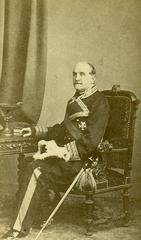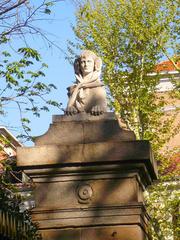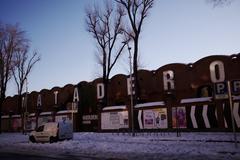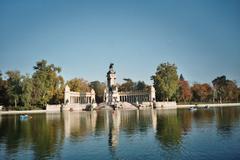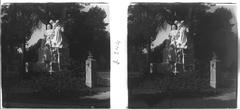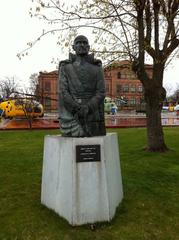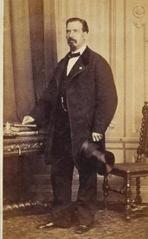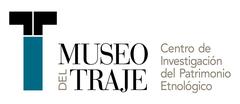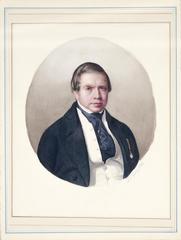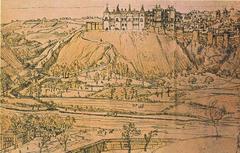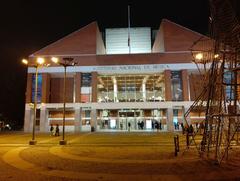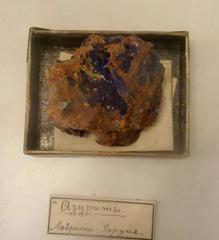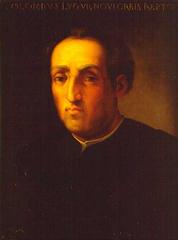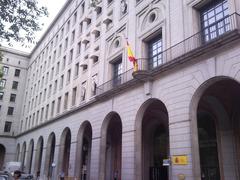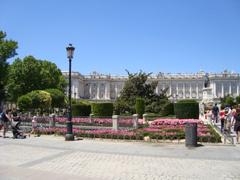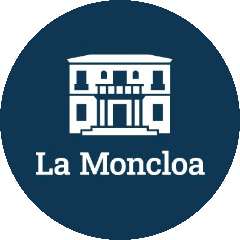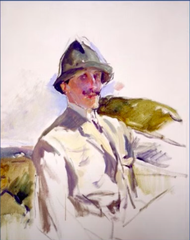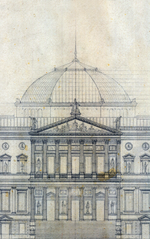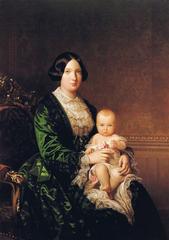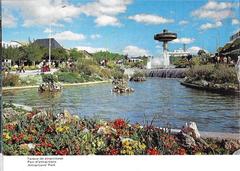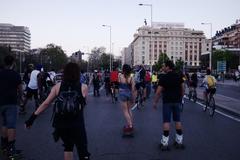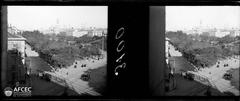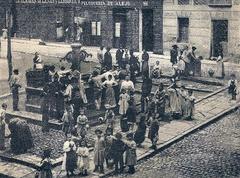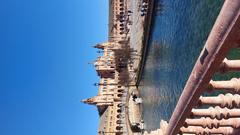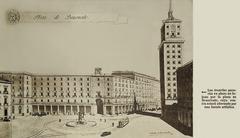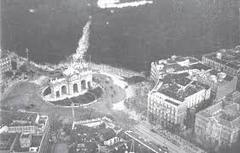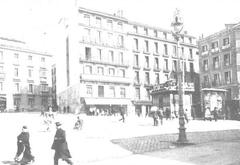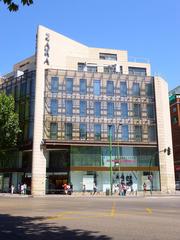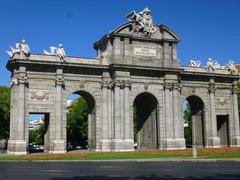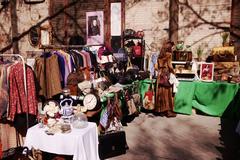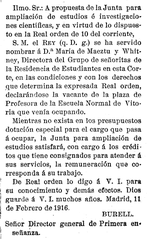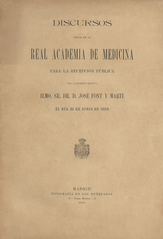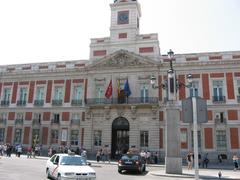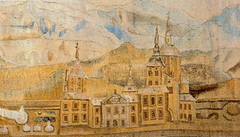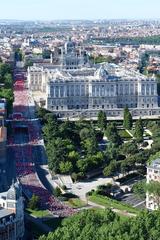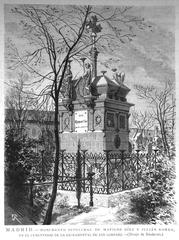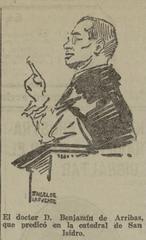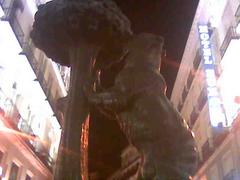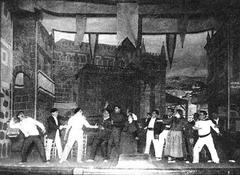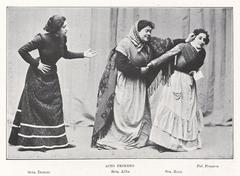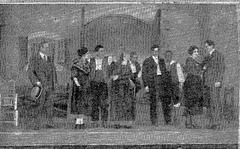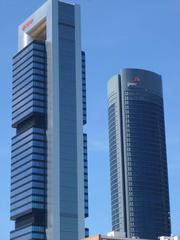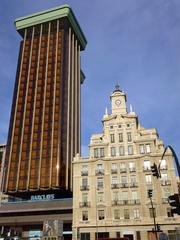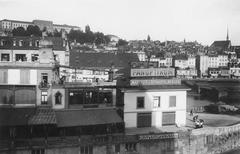Visiting Teatro Real in Madrid: Hours, Tickets, and Travel Tips
Date: 23/07/2024
Introduction
The Teatro Real, also known as the Royal Theatre, is one of Madrid’s most iconic cultural landmarks. Established in 1850, this historic opera house has played a pivotal role in the city’s artistic life, offering world-class performances in opera, ballet, and classical music. The theatre’s significance extends beyond its artistic contributions; it is also an architectural marvel that reflects the neoclassical style prevalent during its construction (Teatro Real Official Website). Over the years, Teatro Real has hosted numerous renowned artists and productions, cementing its status as a cultural icon in Spain and beyond. This comprehensive guide delves into the rich history, architectural grandeur, and practical visitor information for those planning to experience the magic of Teatro Real.
Table of Contents
- Introduction
- History of Teatro Real
- Visitor Information
- Nearby Attractions
- Travel Tips
- FAQ
- Conclusion
History of Teatro Real
Early Conception and Construction
The idea for a grand opera house in Madrid was first proposed in 1818 by King Ferdinand VII, who envisioned a venue that would elevate Madrid’s cultural status and serve as a symbol of the monarchy’s patronage of the arts. Architect Antonio López Aguado drew up the initial plans, and construction began in 1818. However, the project faced numerous delays due to political instability and financial difficulties.
Inauguration and Early Years
The Teatro Real was finally inaugurated on November 19, 1850, in the presence of Queen Isabella II. The opening performance was Donizetti’s “La Favorita,” marking the beginning of the theatre’s role as a premier venue for opera and classical music in Spain. The theatre quickly gained a reputation for its excellent acoustics and opulent design, attracting renowned performers and composers from across Europe.
Architectural Design
The original design of the Teatro Real was a blend of neoclassical and romantic styles, featuring a horseshoe-shaped auditorium with a capacity of around 2,000 seats. The interior was lavishly decorated with gilded stucco, velvet drapes, and intricate frescoes. The stage was equipped with state-of-the-art machinery for the time, allowing for elaborate set designs and special effects.
Challenges and Renovations
Despite its initial success, the Teatro Real faced several challenges in its early years. A significant fire in 1867 caused extensive damage to the building, leading to a temporary closure for repairs. The theatre reopened in 1875, but financial difficulties and changing political climates continued to pose challenges. In the early 20th century, the theatre underwent several renovations to modernize its facilities and improve safety standards. However, these efforts were often hampered by limited funding and bureaucratic hurdles. The Spanish Civil War (1936-1939) further disrupted operations, and the theatre was closed for several years.
Mid-20th Century Decline
The mid-20th century was a period of decline for the Teatro Real. The building suffered from neglect and inadequate maintenance, leading to deteriorating conditions. In 1925, the theatre was closed for major renovations, but the project was plagued by delays and budget overruns. It wasn’t until 1966 that the theatre reopened, but by then, it had lost much of its former glory.
Major Restoration and Reopening
A turning point came in the late 20th century when the Spanish government launched an ambitious project to restore the Teatro Real to its former splendor. The restoration, which began in 1988, was a massive undertaking that involved extensive structural repairs, modernization of technical facilities, and meticulous restoration of the interior decor. The project was overseen by architect José Manuel González Valcárcel and took nearly a decade to complete. The Teatro Real finally reopened on October 11, 1997, with a gala performance attended by King Juan Carlos I and Queen Sofia. The reopening marked a new era for the theatre, which once again became a leading venue for opera and classical music in Spain.
Modern Era and Cultural Significance
Today, the Teatro Real is recognized as one of the most important cultural institutions in Spain. It hosts a diverse program of opera, ballet, and classical music concerts, attracting top-tier performers and productions from around the world. The theatre’s commitment to artistic excellence and innovation has earned it a prestigious reputation on the international stage. In addition to its role as a performance venue, the Teatro Real is also a center for cultural education and outreach. The theatre offers a range of programs aimed at fostering a love of the arts among young people and the broader community. These initiatives include educational workshops, guided tours, and special performances for schools.
Notable Productions and Premieres
Over the years, the Teatro Real has been the site of numerous notable productions and world premieres. Some of the most significant include the Spanish premieres of Wagner’s “Lohengrin” in 1881 and Verdi’s “Aida” in 1874. More recently, the theatre has staged acclaimed productions of contemporary operas, such as Thomas Adès’s “The Exterminating Angel” in 2016.
Architectural and Acoustic Enhancements
The 1997 restoration not only preserved the historical integrity of the Teatro Real but also introduced several enhancements to improve the audience experience. The auditorium’s seating capacity was reduced to 1,746 to provide more comfortable seating and better sightlines. The stage was equipped with advanced technical facilities, including a state-of-the-art lighting system and a sophisticated acoustic shell designed to enhance sound quality.
Visitor Information
Visiting Hours
The Teatro Real is open for guided tours from Monday to Sunday, typically between 10:00 AM and 4:30 PM. Performance times vary, so it is advisable to check the official Teatro Real website for the most up-to-date schedule.
Ticket Prices and Booking
Ticket prices for performances at the Teatro Real vary depending on the production and seating category. Prices generally range from €15 to €200. Tickets can be purchased online through the official website, by phone, or at the box office. It is recommended to book tickets in advance, especially for popular shows.
Guided Tours
Guided tours provide an in-depth look at the Teatro Real’s history and architecture. Tours typically last about an hour and include access to the main auditorium, stage, and behind-the-scenes areas such as rehearsal rooms and costume workshops. Tour tickets are priced at approximately €10 for adults, with discounts available for students, seniors, and children.
Amenities
The Teatro Real offers various amenities to enhance the visitor experience, including a café serving light refreshments and a gift shop selling opera-related merchandise and souvenirs. The theatre is also accessible to visitors with reduced mobility, with designated seating and facilities.
Nearby Attractions
The Teatro Real is conveniently located in the heart of Madrid, making it easy to explore other nearby attractions. Some notable sites within walking distance include the Royal Palace of Madrid, Plaza Mayor, and the Almudena Cathedral. The bustling Gran Vía, known for its shopping and dining options, is also close by.
Travel Tips
When planning your visit to the Teatro Real, consider these travel tips:
- Public Transport: The theatre is easily accessible via public transport. The nearest metro stations are Ópera (Lines 2, 5, and R) and Santo Domingo (Line 2).
- Dress Code: While there is no strict dress code, smart casual attire is recommended for attending performances.
- Arrival Time: Arrive at least 30 minutes before the performance or tour to allow time for security checks and finding your seat.
FAQ
Is there a dress code for attending performances at the Teatro Real?
There is no strict dress code, but smart casual attire is recommended.
Can I take photos inside the Teatro Real?
Photography is generally not allowed during performances, but you can take photos during guided tours in designated areas.
Are there any discounts available for tickets?
Yes, discounts are available for students, seniors, and groups. Check the official website for details.
How can I get to the Teatro Real?
The theatre is easily accessible by metro, with the nearest stations being Ópera and Santo Domingo.
Conclusion
Teatro Real stands as a testament to Madrid’s rich cultural heritage and its enduring commitment to the arts. Its storied history, architectural grandeur, and world-class performances make it a must-visit destination for anyone interested in opera and classical music. Whether attending a performance or exploring its historic halls, visitors to the Teatro Real are sure to be captivated by its timeless charm and artistic excellence.
For more information on the Teatro Real, including upcoming performances and ticket bookings, visit the official Teatro Real website.
